目次
Craft Report
100% Natural Materials, a Family Tradition of Japanese Candlemaking.
Located in Takashima City, Shiga Prefecture, a town surrounded by abundant mountainous land on the west side of Lake Biwa, is one of Japan's few handmade Japanese candle makers, Daiyo. Founded by the first generation in 1914 (Taisho 3), over 100 years ago, the company has continued to produce handmade candles made from 100% natural, domestically produced haze wax.
In recognition of their long-standing achievements in preserving traditional Japanese candle making techniques, Daiyo candles were certified as a traditional craft of Shiga Prefecture in 1984. Now, the eldest son, Takumi Onishi, the fourth generation owner, has taken over the family business, preserving the traditional style while also facing the times and challenging himself to create new products.

A key feature of Japanese candles is the use of wax derived from the berries of the Haze tree (Japanese wax tree). This allows them to burn with less smoke compared to Western paraffin (petroleum-based) candles, though low production volumes make the material precious. Nevertheless, the flame of these painstakingly crafted candles flickers beautifully and has brought a sense of healing to people for many years.
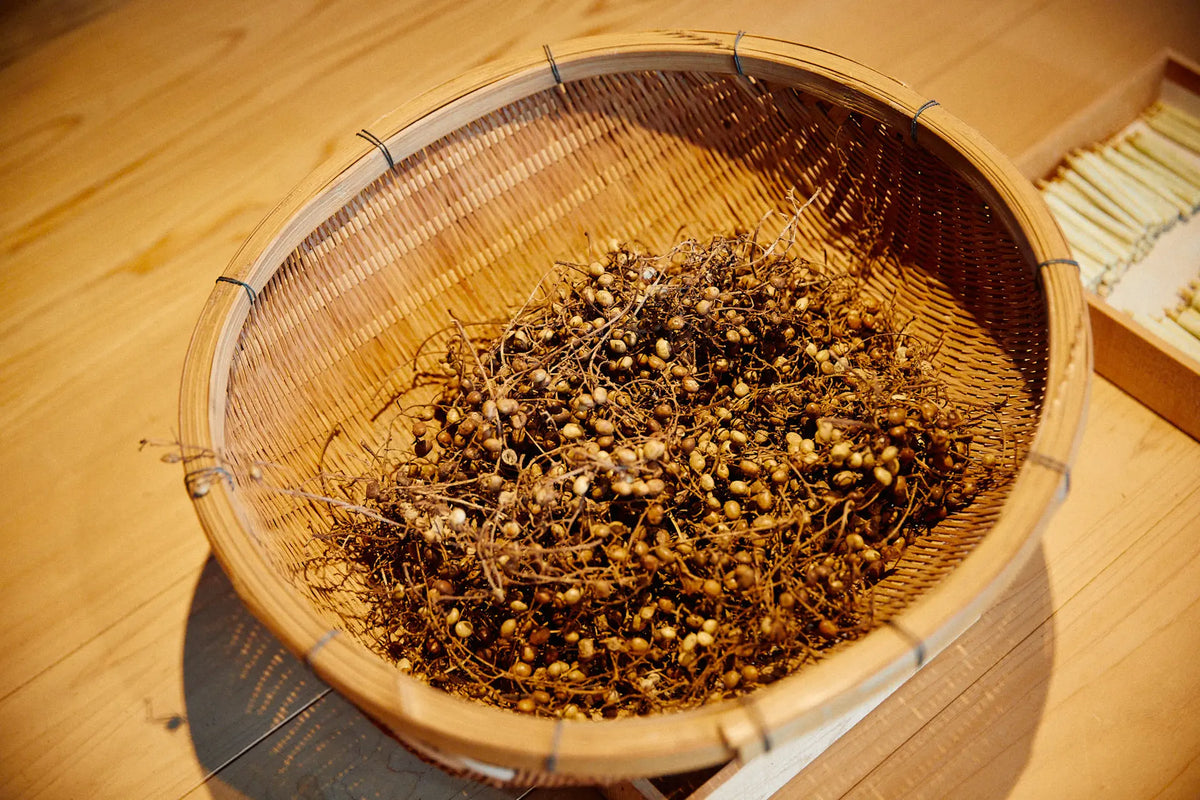
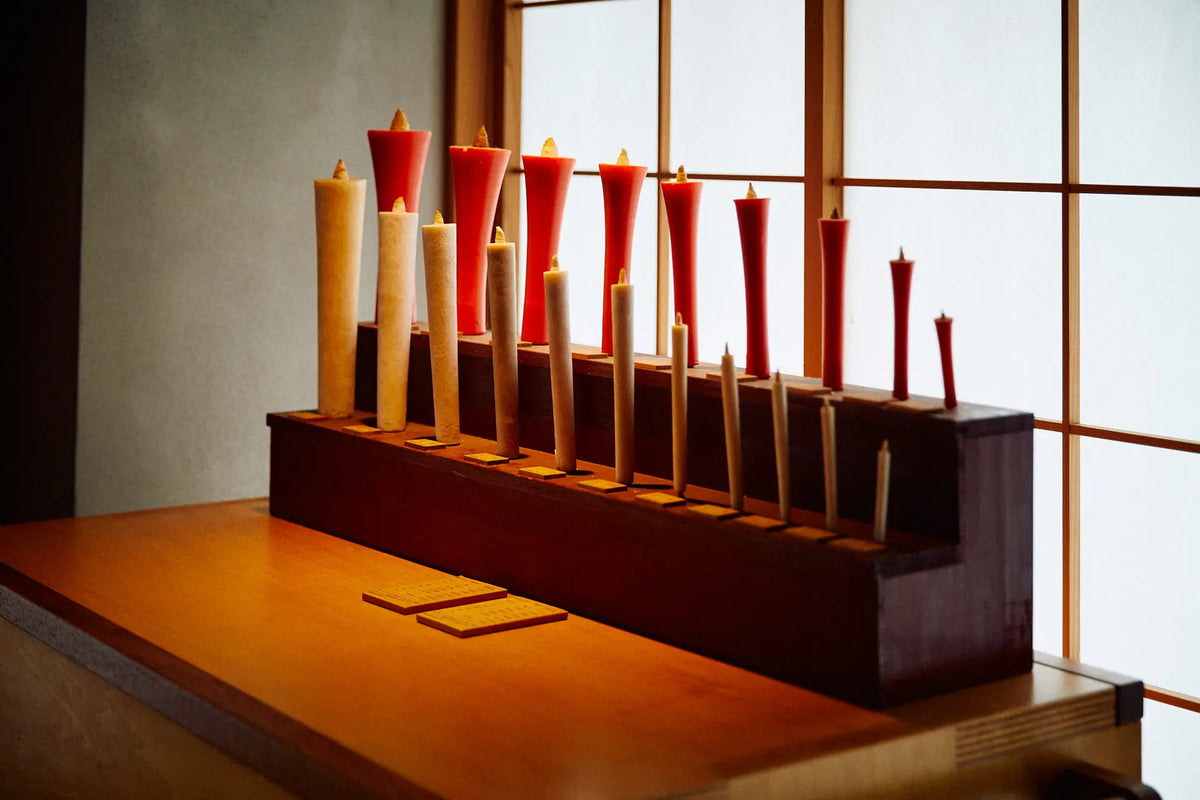
Traditional hand-made method that focuses on the temperature of the wax.
The traditional method of making Japanese candles begins with crafting the wick. Rush from the Juncaceae family is wrapped around a skewer that has been covered in washi paper and then thinly secured with silk floss. The thickness of the wick and the way it is wound change the candle's flame power and affect how the wax melts, so years of cultivated skill are required to ensure stable product quality. Finally, the skewer is pulled out from the wick, leaving a hollow core that serves as the hole for placing the candle onto the pin of a candle stand.
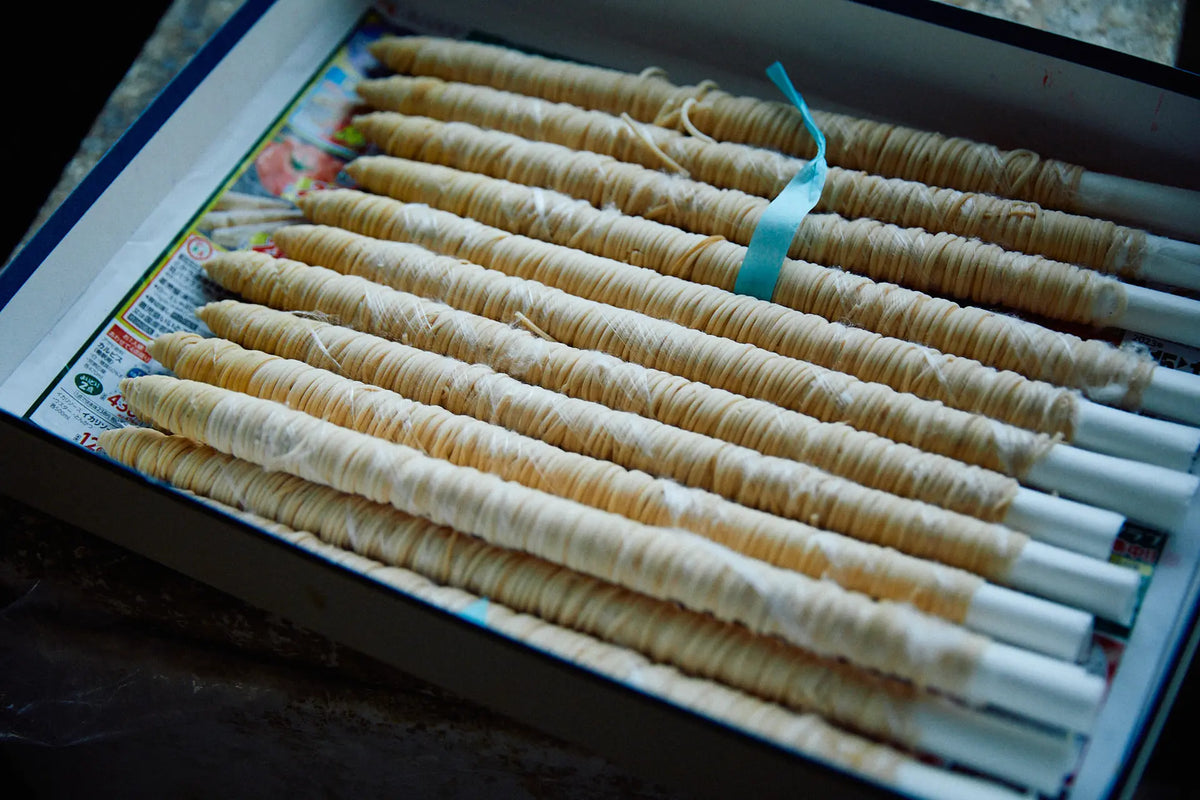
Daiyo's Japanese candles are made using a time-honored method called "Tegake" (hand-dipping). After a base coat of wax is applied to the wick, the candle is formed through processes called "Shitagake" (under-coating) and "Uwagake" (top-coating).The Shitagake process involves rotating the wick with the right hand while using the bare left hand to apply layers of viscous wax that has been melted to about 40 degrees Celsius.For the next step, the Uwagake process, a wax with a higher melting point than the Shitagake wax is used. This is applied to create a difference in melting times between the inner core and the outer layer.By doing this, the slower-melting outer wax acts as a barrier, making the candle less prone to dripping than typical Western candles and allowing it to burn down cleanly, leaving only the wick.
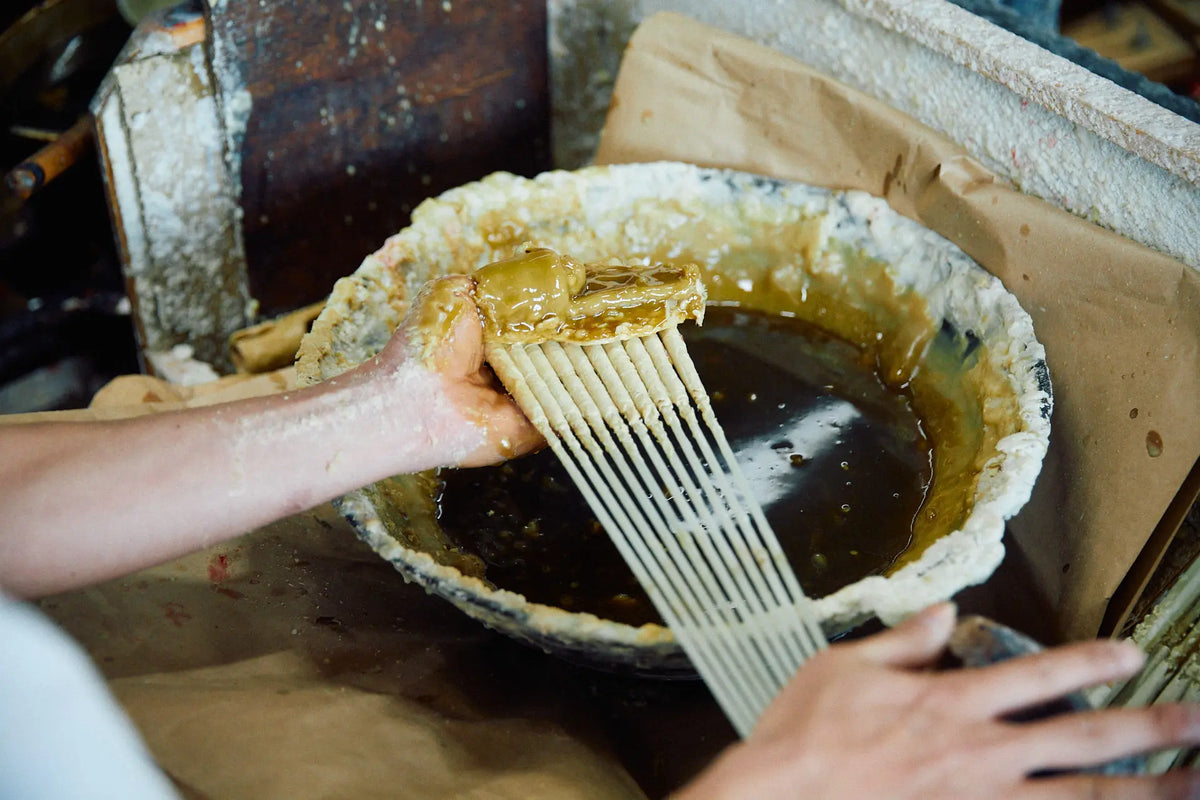
A bamboo 'nail' is worn on the thumb to apply the wax evenly.
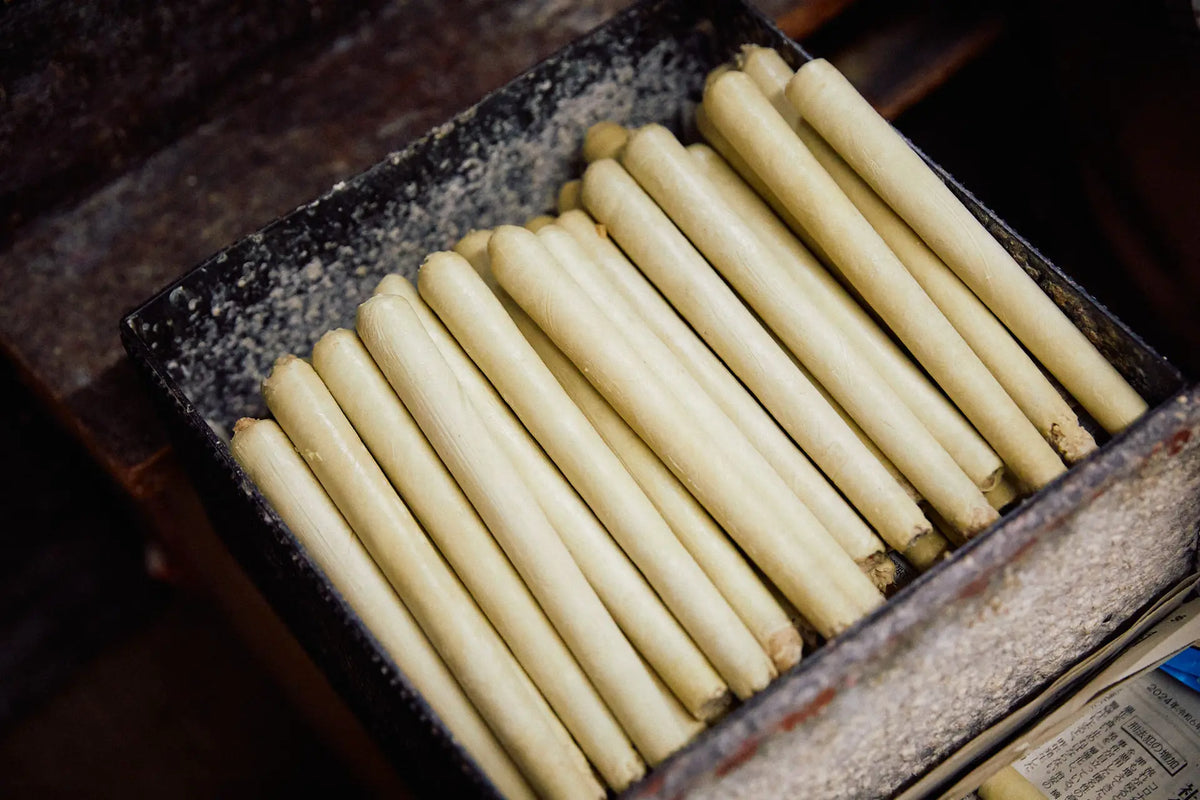
A finished candle after the coating process. Watching the process, one can imagine it takes a considerable amount of time to make it this thick.
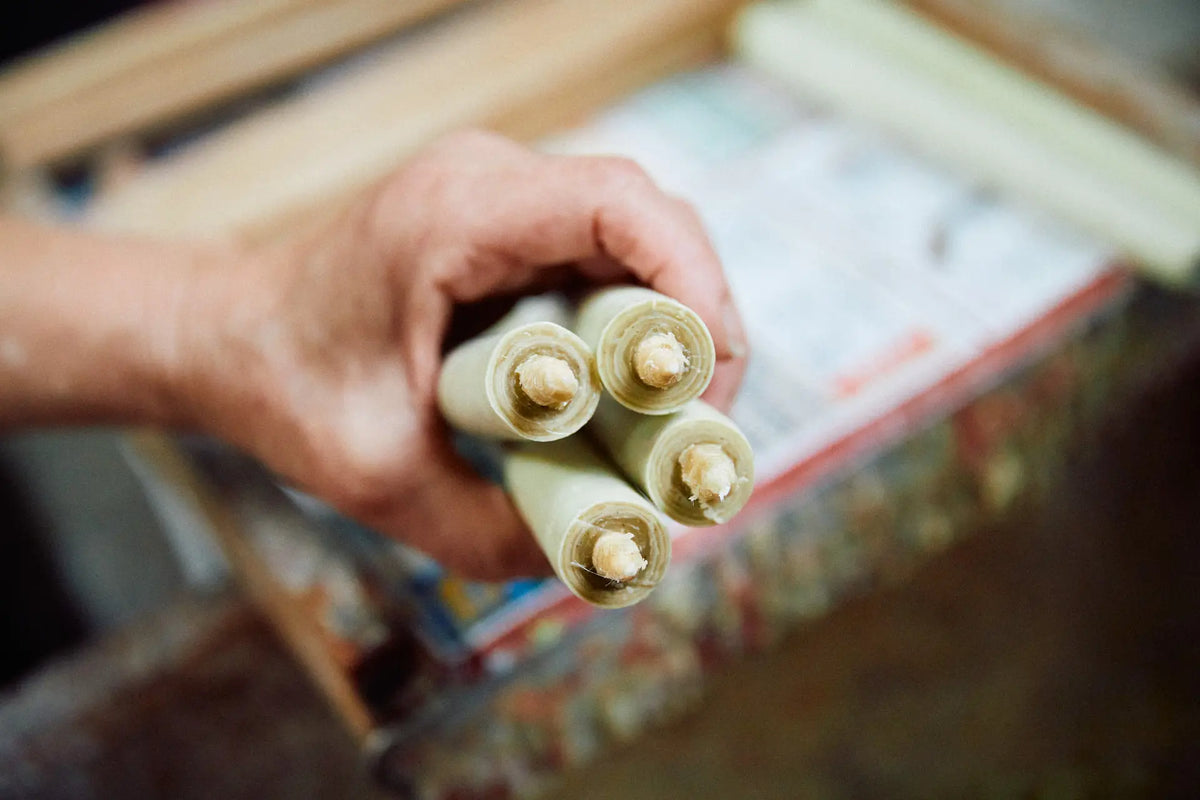
The top is cut to expose the wick. The cross-section of the candle revealed a pattern just like the annual rings of a tree.
The Tegake work involves repeatedly applying wax to the wick and letting it dry, gradually building it up to the desired thickness. The outcome is said to be influenced by changes in temperature and humidity, and even the craftsman's own physical condition."It's a difficult technique that cannot be mastered without experiencing many seasons," says Mr. Onishi. "You are only recognized as a true artisan when you can make hundreds of candles today that are of the same quality as the ones you made perfectly yesterday."
Daiyo produces not only traditional Japanese candles but has also developed small, charming "Mame-rōsoku" (bean candles) for casual use, as well as candles made from rice bran wax, created with sustainability in mind.
In 2011, this "Rice Wax Candle" was selected for the Good Design Award and the Good Design Award - Small and Medium Enterprise Agency Director-General's Award, which helped bring Mr. Onishi's new candle ideas to public attention. The rice bran candle, which met a previously non-existent need, has become a catalyst for rethinking the materials of the candles we use today. Supported by new fans who want to use sustainable rice wax candles that are a little kinder to the earth than paraffin (petroleum-based) candles, the Rice Wax Candle has remained a long-selling hit, even now, nearly 15 years after its development.

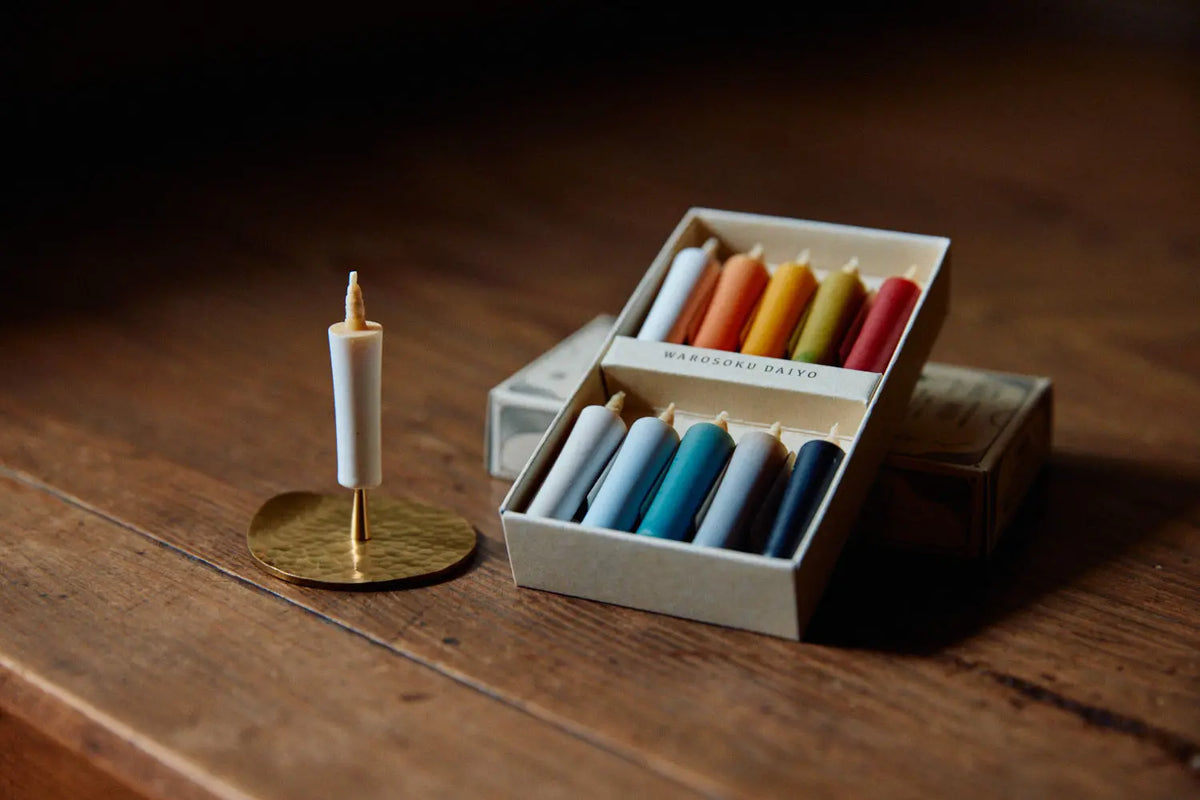
Candles: A Testament to Ancestral Wisdom for the Coexistence of Nature and People.
In today's world, we live an electrified life that doesn't allow the power of nature into our homes, but in a way, he feels that a life that is too far removed from nature is too brutal and in some ways dangerous. As Onishi researched not only candles but also various cultures related to fire, he came across the ancient belief in the Yin-Yang and Five Elements.
It is said that all things are composed of wood, fire, earth, metal, and water, and each of these elements is further classified into the ten heavenly stems, which represent the opposing attributes of yin and yang.
The kanji that represent the yang and yin aspects of fire are called "hinoe" and "hinoto," but hinoe, which has a yang attribute, is considered to be the concept of nature, such as the sun, that humans cannot control, while hinoto, which has a yin attribute, is considered to be a small fire that humans can control. At this time, Onishi realized that when "fire" and "ding" are arranged as kanji radicals, they form "light," and he says that many emotions began to well up inside him.
Considering that their ancestors had gone to the trouble of creating the kanji character for "light" (灯) and passing it on to future generations in order to coexist with fire in their daily lives, they felt a great sense of confidence that the candle-making they were doing would also have meaning for future society.
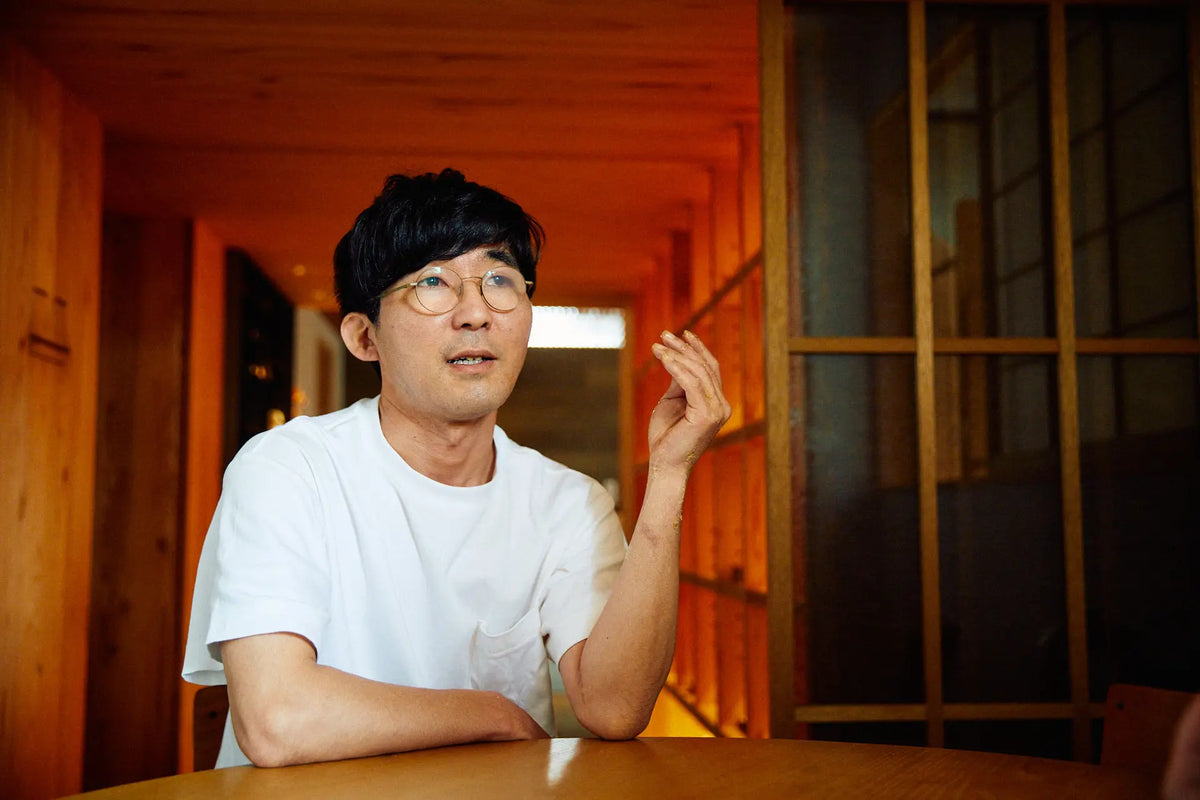
The interview took place while he was still in the middle of working, so there was still wax stuck to his left hand.
"In Japan, where wooden buildings are the norm, people used their ingenuity to invent the candle, and succeeded in minimizing a frightening natural phenomenon. They were able to safely borrow the natural power of fire and bring it indoors. Even though my voice may be small, I would be happy if by continuing to make products people can incorporate even a little of nature into their lives and enjoy fire at a comfortable distance."
Interview, photography, and text: Morishita Daiki





